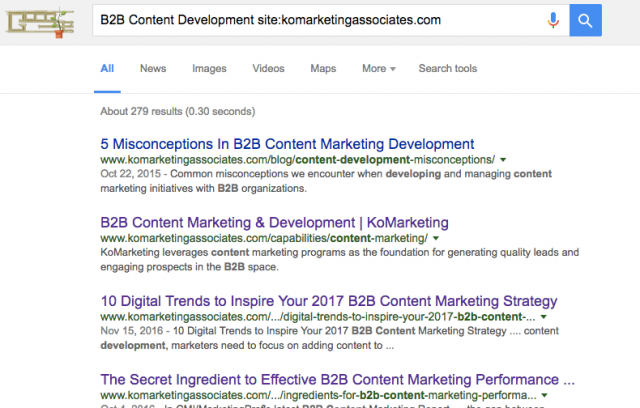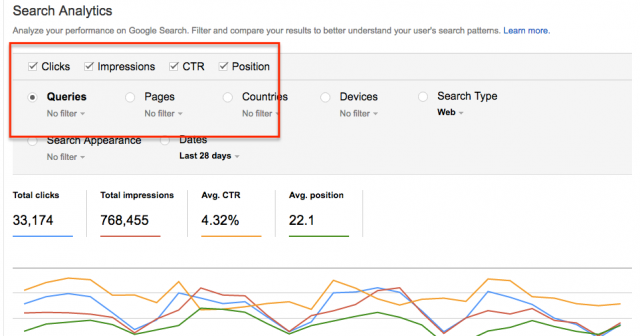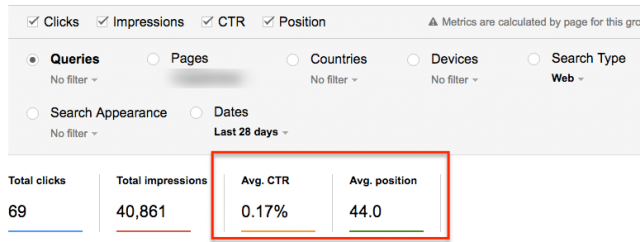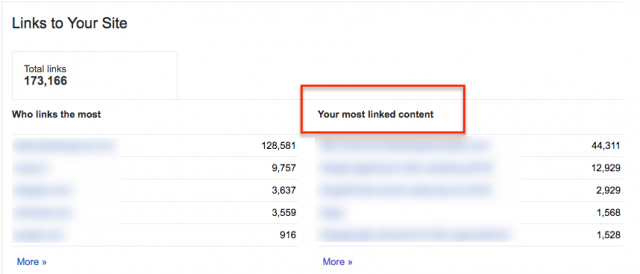The term “SEO Audit†can be quite nebulous. I’ve seen all types of SEO audits from colleagues and competitors, offering a range of assessments and areas of focus. While some of these SEO audits could certainly be scrutinized, many have been quite thorough and impactful.
Of course, B2B marketers have differing expectations of an SEO audit as well. While almost every audit addresses SEO best practices, more challenging issues arise when tackling the expectation of strategic direction.
To that extent, SEO auditing can fail to deliver the right expectations or miss the mark with client objectives.
Fortunately, most organizations realize there are fundamental issues that can be uncovered in SEO auditing, regardless of scope. By resolving these issues, B2B organizations may realize significant long-term gains in organic search performance.
But, B2B marketers do not always need to invest significant dollars in SEO auditing at the start. There are several specific types of SEO audits that require little cost OR involvement from a vendor or agency.
Before your organization makes a decision to engage a vendor in their SEO programming (even KoMarketing!), consider these five types of SEO audits first, to determine if there are easy wins and immediate opportunities to improve performance.
The Duplicate Content Audit
One of the first aspects of a website to audit for SEO is associated with website copy. The key is to ensure the same copy is not accessible from multiple web addresses.
As highlighted in recent coverage here at KoMarketing, anonymous data collected from 100,000 websites by SEMrush showed that 50 percent of websites face issues with duplicate content.
How can your organization make sure you are on the right side of that 50 percent benchmark?
Here are a few suggestions.
In recent posts from my colleague Ryan Young, he details two methods for identifying and preventing duplicate content issues.
- First, consider performing a “[keyword] site:domain.com†search to uncover whether duplicate content may exist on the website. Here’s an example of the existing assets we have on KoMarketing for the phrase “B2B content marketingâ€. With this information in hand, we know to avoid replicating this material in future content development.
- Second, consider using the Small SEO Tools Plagiarism Checker. This free resource scans content (up to 1,000 words per search) and notifies users of any complete sentences that already exist somewhere on the web. A score of 100% means your content is original and safe from duplicate content issues.
Screaming Frog is another resource that can be used to identify duplicate copy and tagging across web pages. Their user guide provides specific instructions and references for identifying issues with duplicate content.
Finally, ensure that web pages incorporate a REL canonical tag. The integration of this tag helps mitigate issues with inadvertent indexing of campaign-tracking information or session ID’s in web addresses. Screaming Frog can also be used to audit the inclusion of this tag in web page templates.
The Google Search Analytics Audit
Google Search Console’s Search Analytics report provides powerful information for understanding what keywords and phrases drive traffic and visibility for an organization’s individual web pages in organic search.
By filtering data to evaluate individual page performance, B2B marketers can get a better understanding of the success (or opportunity) key assets have in organic search.
How do you do this?
Here are a few recommended steps:
- First, I recommend reviewing all accessible data points (Clicks, Impressions, CTR, and Average Position).
- Second, choose the “Pages†option, filtering by specific web address parameters (such as “/blog/†or “services.html†as an example).
- From here, I tend to view the page (web address) report first, diving into individual pages to assess key phrases driving traffic and visibility.
This information is important in providing B2B marketers direction for tackling individual keyword strategies and improving the objectives of content marketing assets.
In the example below, I’m showing a screenshot of a filtered view of the same search analytics account, highlighting a sub-section of assets.
Based on summary data alone, we can infer that all of the web pages associated with this sub-section require further SEO attention. This section’s overall CTR and position in organic search are well below the average performance of the website’s assets in general.
We now have an area of focus in ongoing SEO program development.
The Inbound Link Audit
How successful has your organization been at acquiring inbound links to specific site assets and content marketing initiatives?
The Google Search Console inbound link report provides free insight into what domains and web pages link to your organization’s website and individual website assets (web addresses).
Looking for more SEO-centric link acquisition information?
We use a combination of commercial SEO resources to further evaluate inbound link performance. All of these resources have basic, free options as well, even though accessible data available is very limited.
- Moz Open Site Explorer – I recommend reviewing the “Just Discovered†link information in coordination with general inbound link information.
- SEMRush Backlink Audit Tool – SEMRush goes a bit further in link reporting to provide a link assessment on those that may be deemed “toxic†and adversely impact SEO performance in the long run.
- Buzzsumo Inbound Link Report – Buzzsumo’s recent partnership with Majestic SEO provides B2B marketers with an in-line view of inbound links per content marketing asset, similar to Google Search Console’s report.
The trend in SEO auditing with these tools is that they evaluate link acquisition overall, and in coordination with content marketing assets, as opposed to direct qualification of “tactical effectivenessâ€.
It’s my opinion that most B2B marketers have little time to directly acquire links from third party sites, at least on a consistent, ongoing basis. Thus, it is critical that they can organically acquire these links through valuable content development (onsite and offsite).
All of the resources above help audit the effectiveness of these initiatives as well as the link building successes of competitors, direct and indirect.
The Social Media Visibility Audit
While social media may provide more of an indirect benefit to SEO performance, a lack of social media visibility might mean the B2B organization isn’t effectively connecting with their online audience; at least those that help share and distribute content through social channels.
Social media auditing is a place that Buzzsumo shines brightest.
While the free version of the platform provides limited access to an organization’s social media visibility, the commercial license goes much more in-depth, assessing content performance individually and site-wide.
For B2B marketers on a more restrictive budget, SharedCount provides similar social sharing metrics, sans Twitter due to their API change a while back.
At the other end the (pricing) spectrum, The SimilarWeb Social Traffic report offers visibility into the direction of social media activity and effectiveness of content marketing performance.
Don’t forget to evaluate platform-specific analytics and Google Analytics social media referral reporting as well. All of these assets can ultimately be critical when benchmarking social media performance, beyond an initial audit.
The Google Analytics Audit
Finally, B2B marketers should always perform a quick audit and review of their Google Analytics (or comparable reporting tool) integration to ensure everything is tracking correctly and appropriately.
- Screaming Frog provides a simple method for confirming that Google Analytics tracking code (or almost any tracking code) is present on all appropriate web pages.
- Are you tracking as many conversion points as possible? Reassess key landing pages to ensure conversion-oriented actions are measured in Google Analytics, either through goal tracking, event tracking, or both.
- What about your organic search performance in general? Once again, Screaming Frog provides a method for combining web address information, Google Analytics traffic data, and Google Search Console data, in one crawl report. This is a pretty powerful audit for developing top-level direction in SEO activities moving forward.
- And lastly, it’s always recommended to review traditional organic search referral reporting, across web pages and website sections, to identify opportunities and areas for improvements.
While auditing Google Analytics or another applicable third party measurement application may only indirectly benefit SEO program work in the short term, these resources are essential for demonstrating performance in the long-run.
Furthermore, these type of audits may uncover immediate opportunities to either demonstrate success or identify “low-hanging fruit†to prioritize in tactical execution.
Final Thoughts
The common thread between these SEO audits is that they all provide direction towards next steps in program development work; both strategically and specific to tactical application.
In terms of audit priority, my recommendation is to consider the areas of SEO (copy, links, keywords, etc) your organization feels the most important to address first. It can be easy to get overwhelmed executing all of these at once and become overloaded with information.
From there, it’s best to determine what work can be done in-house and where more specialized program development needs to be considered.
What types of SEO auditing have been important for your organization? I would love to read thoughts and perspective via comments below.






